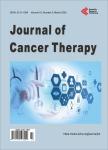EUS FNA of Altered Left Adrenal Gland Morphology Suggests Amending CT and PET-CT Attenuation Threshold Values That Predict Malignancy
EUS FNA of Altered Left Adrenal Gland Morphology Suggests Amending CT and PET-CT Attenuation Threshold Values That Predict Malignancy作者机构:Department of Radiology Mayo Clinic College of Medicine Rochester USA Division of Gastroenterology and Hepatology Mayo Clinic College of Medicine Rochester USA
出 版 物:《Journal of Cancer Therapy》 (癌症治疗(英文))
年 卷 期:2012年第3卷第6期
页 面:1029-1036页
学科分类:1002[医学-临床医学] 100214[医学-肿瘤学] 10[医学]
主 题:Altered Adrenal Morphology Endoscopic Ultrasound Fine Needle Aspiration Unenhanced CT Attenuation Value PET Standardized Uptake Value
摘 要:Introduction: In the setting of an extra-adrenal malignancy, it is a recognized clinical challenge to try and distinguish a benign adrenal mass from a metastatic deposit. Current non-invasive diagnostic tools for adrenal gland evaluation include CT, MRI, PET and PET-CT. Diagnostic interpretative error can occur as evaluations rarely have complete cytologic or histologic correlation for concordance purposes. Aims: To establish the performance characteristics of non-contrast CT attenuation values (Hounsfield units-HU) and the optimal PET-CT maximum standard uptake value (SUVmax) for predicting adrenal malignancy when correlated with adrenal gland endoscopic ultrasound fine needle aspiration (EUS FNA) cytology results. Methods: A prospectively maintained EUS database was reviewed to identify consecutive patients who underwent a left adrenal gland FNA. Non-contrast CT attenuation values and SUVmax scores were calculated. EUS FNA cytology results were used as the reference standard for determining the presence of benign versus malignant adrenal gland status. Results: Sixty-two patients (69 ± 11 years) underwent adrenal EUS FNA, 34 (54.8%) of whom had a clinically suspected or established extra-adrenal malignancy. Non-invasive imaging was suggestive of abnormal adrenal morphology or altered PET-CT FDG activity in 45 (72.6%) patients. Elevated attenuation values (≥10 HU) by non-enhanced CT had a sensitivity and specificity of 100% and 34.6%, respectively. The SUVmax for malignant altered morphology was significantly higher than that for benign lesions [(8.5 ± 3.1 vs 3.3 ± 0.7;(p = 0.0001)]. ROC curve analysis indicated that an optimum cutoff SUVmax of ≥4.1 (AUC 0.92) yielded the best power distinction for malignancy with a sensitivity and specificity of 89% and 100%. Conclusion: When evaluating altered adrenal morphology by non-invasive methods, the performance characteristics of elevated CT attenuation values are suboptimal. But by adopting a SUVmax cut-off value of ≥4.1



